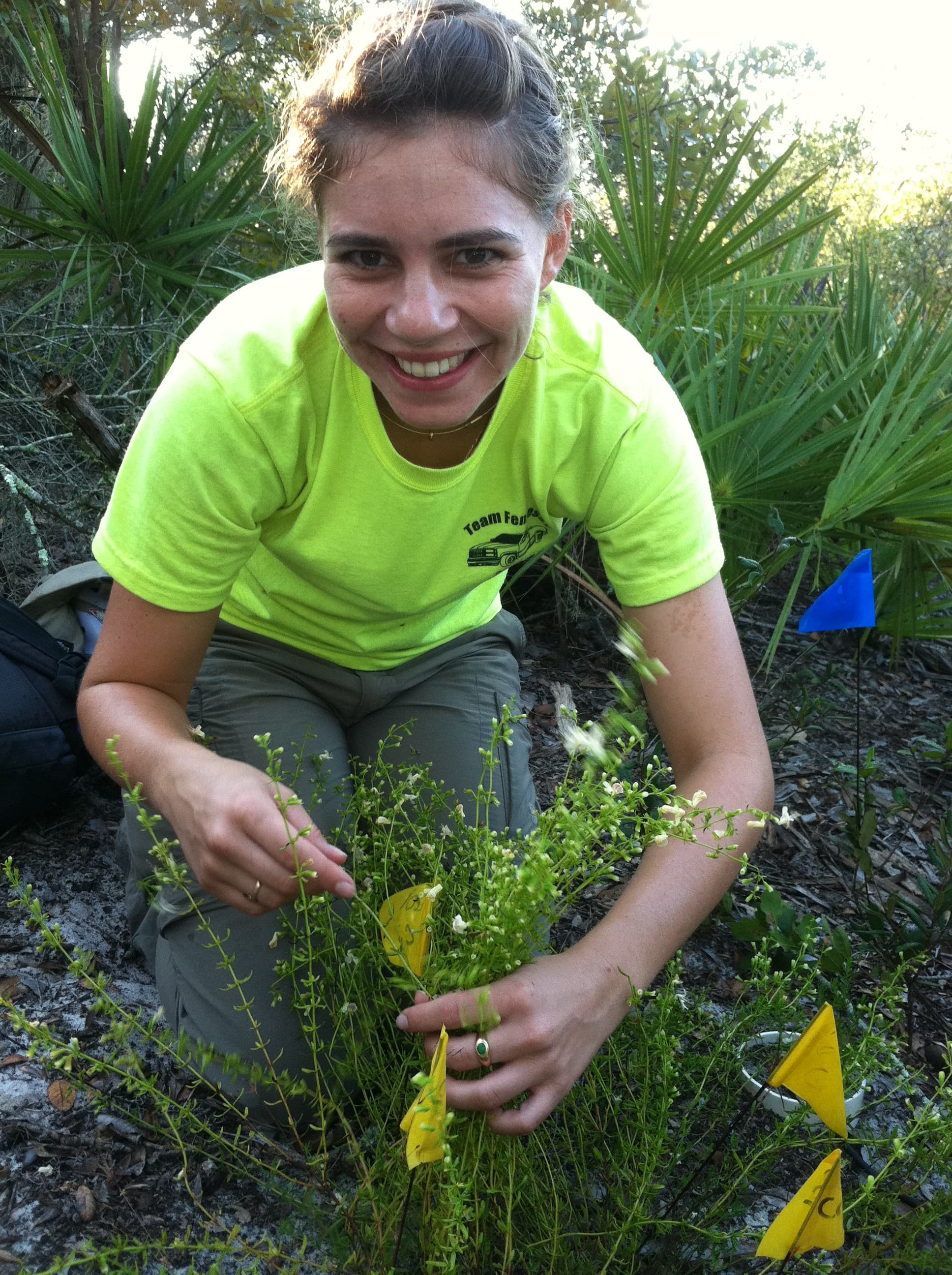 Photo by Sarah Haller Crate.
Photo by Sarah Haller Crate.Archbold Biological Station Expands Protection of Flamingo Villas Scrub Habitat
By Zach Franco
Recently, Archbold Biological Station facilitated the conservation of 17 acres of scrub habitat within the Flamingo Villas subdivision in Sebring. With the funding from a donor interested in scrub plant conservation and collaboration with Keith Fountain of Conservation Advisors, LLC., the acquisition of 64 individual parcels brought conservation of the subdivision from 93% to 95%. Over the following years, Archbold will seek to sell these parcels to the US Fish and Wildlife Service to be part of the Lake Wales Ridge National Wildlife Refuge. The funds received through that sale will in turn be used to work with willing landowners to complete the conservation of the remaining 61.4 acres of Flamingo Villas.
Flamingo Villas sits atop the ancient Lake Wales Ridge. Millions of years old, the ‘Ridge’ is a large sand dune that stretches 116 miles in central Florida, which formed through the deposition of sediments from oscillating sea levels over time. As the Ridge was once an isolated island in the sea, this unique biogeographical history gave rise to the Florida Scrub, an ecosystem adapted to the nutrient poor sandy soils, frequent droughts and wildfires, and intense weather patterns. The scrub, particularly along the Lake Wales Ridge, harbors one of highest concentrations of rare and endemic species (species found nowhere else in the world) in North America.
Despite the unique biodiversity, the Lake Wales Ridge has been subject to immense change and habitat fragmentation throughout the last century. The sandy soils of the scrub proved fertile for citrus production as producers established groves southward into Polk and Highlands Counties following devastating freezes further north in the early to mid-1900s. Additionally, the high, dry
scrub land became prime real estate for new residents moving to central Florida. This led to the conversion of more than 85% of the natural scrub habitat by the 2010s.
Meanwhile, scientists and conservationists at Archbold Biological Station, Bok Tower Gardens, The Nature Conservancy, and statewide universities were discovering the unique assemblages of flora and fauna in the Florida Scrub. As knowledge was built about the biodiversity of the scrub, it became evident that the ecosystem was at risk of being lost. This led to the formation of widescale partnership efforts to protect the remaining habitat along the Lake Wales Ridge.
In 1994, following a grassroots effort from local conservation organizations, the Lake Wales Ridge National Wildlife Refuge was designated as the first refuge for the protection of endangered plants. Within the Refuge’s boundaries was Flamingo Villas – a formerly platted subdivision with hundreds of small ¼- and ½-acre lots owned largely by absentee landowners. Throughout the last 30 years, the Fish and Wildlife Service and partners like Archbold, The Nature Conservancy, Polk and Highlands Counties, and others have worked to acquire the parcels within the boundary and reconnect the fragmented ecosystem.

Flamingo Villas supports at least 10 federally listed plant species, including the only protected population of Garret’s Scrub Balm – a woody mint found only in Highlands County. The subdivision also supports populations of Florida Scrub-Jays, Florida’s only endemic bird, and dozens of endemic invertebrate species.
The rare and endemic species of Flamingo Villas and Lake Wales Ridge depend greatly on the natural ecological process of fire. Since 2022, prescribed burning has had to be shut down by USFWS in Flamingo Villas, as the agency requires direct permission from each individual and absentee landowner with parcels dispersed through the refuge. The acquisition of the 17 acres will ultimately contribute to restoring fire back to this ecosystem. This restoration of fire will not only enhance the health of the ecosystem, but will ensure fuels don’t build up and result in destructive, uncontrollable wildfires.
Though much of the Lake Wales Ridge has been converted, there is still hope for the biodiversity that remains. 17 acres of scrub may not seem like a lot, but in context of the bigger picture, it contributes to the reconnection and protection of a gem of Highlands County. Whether at the Lake Wales Ridge National Wildlife Refuge, Lake June-in-Winter Scrub Park, Highlands Hammock State Park, or Archbold Biological Station, the biodiversity of the scrub continues to flourish, and is a reminder of the wondrous natural history that lies beneath our feet here in Highlands County.